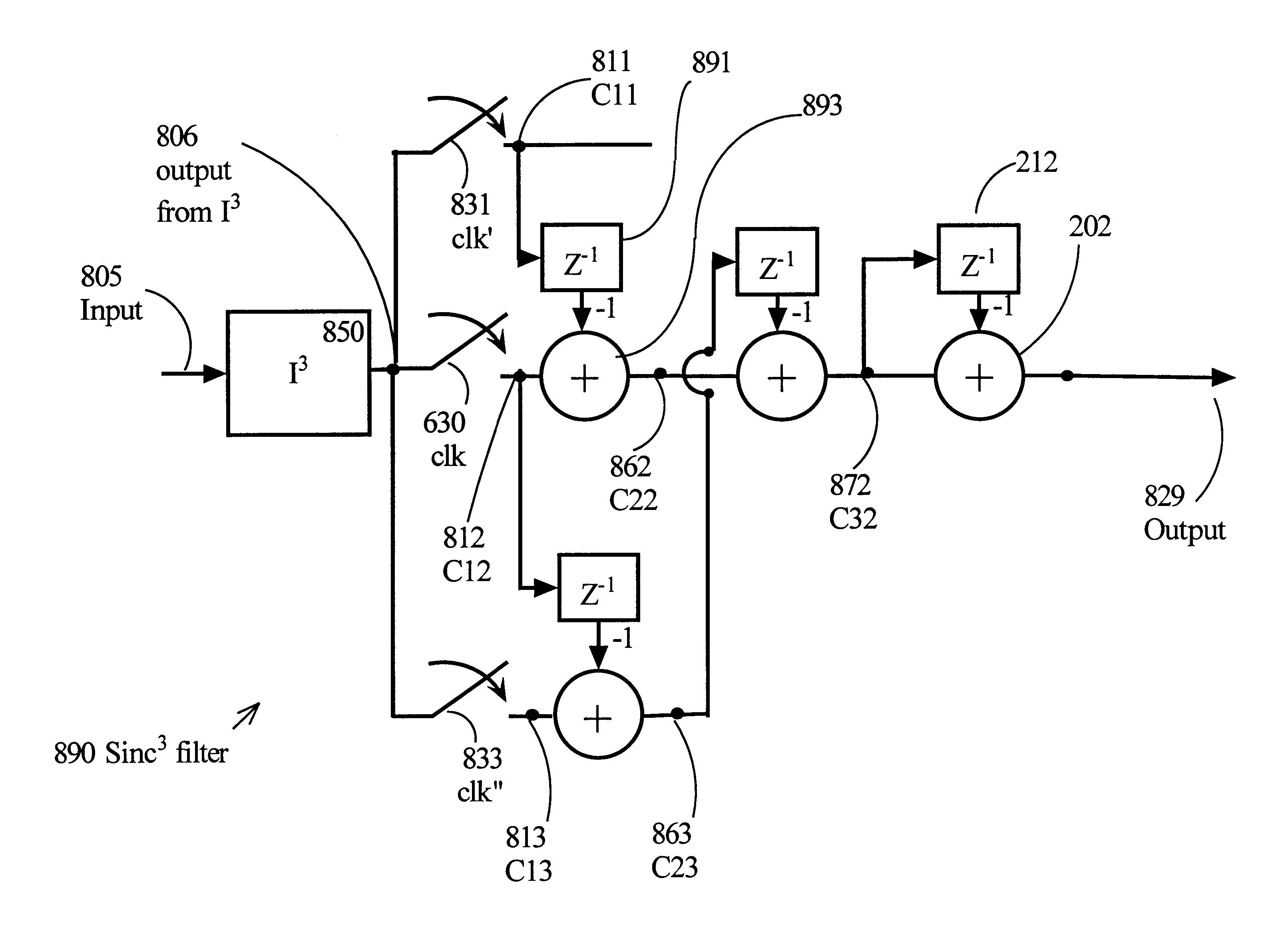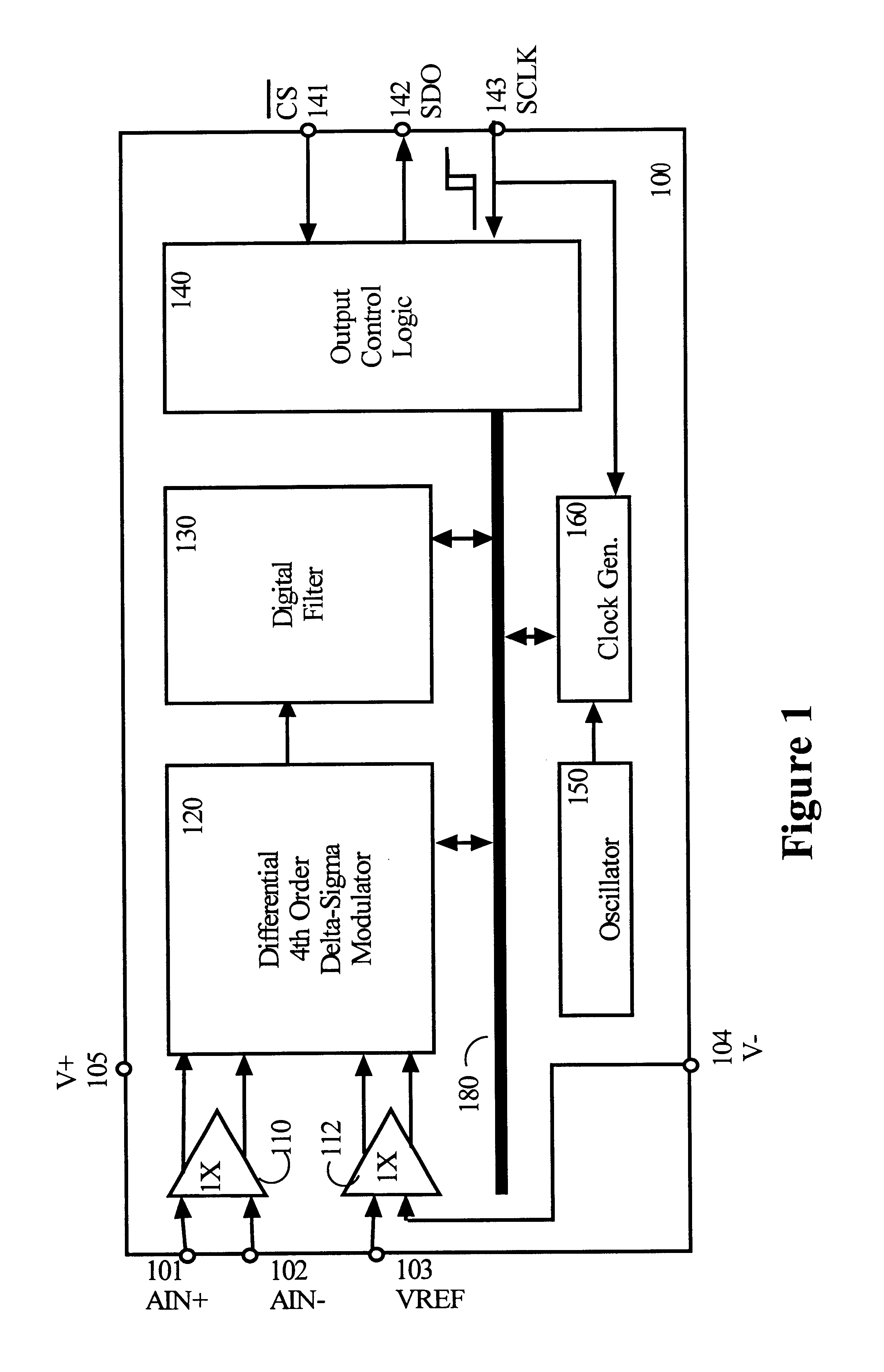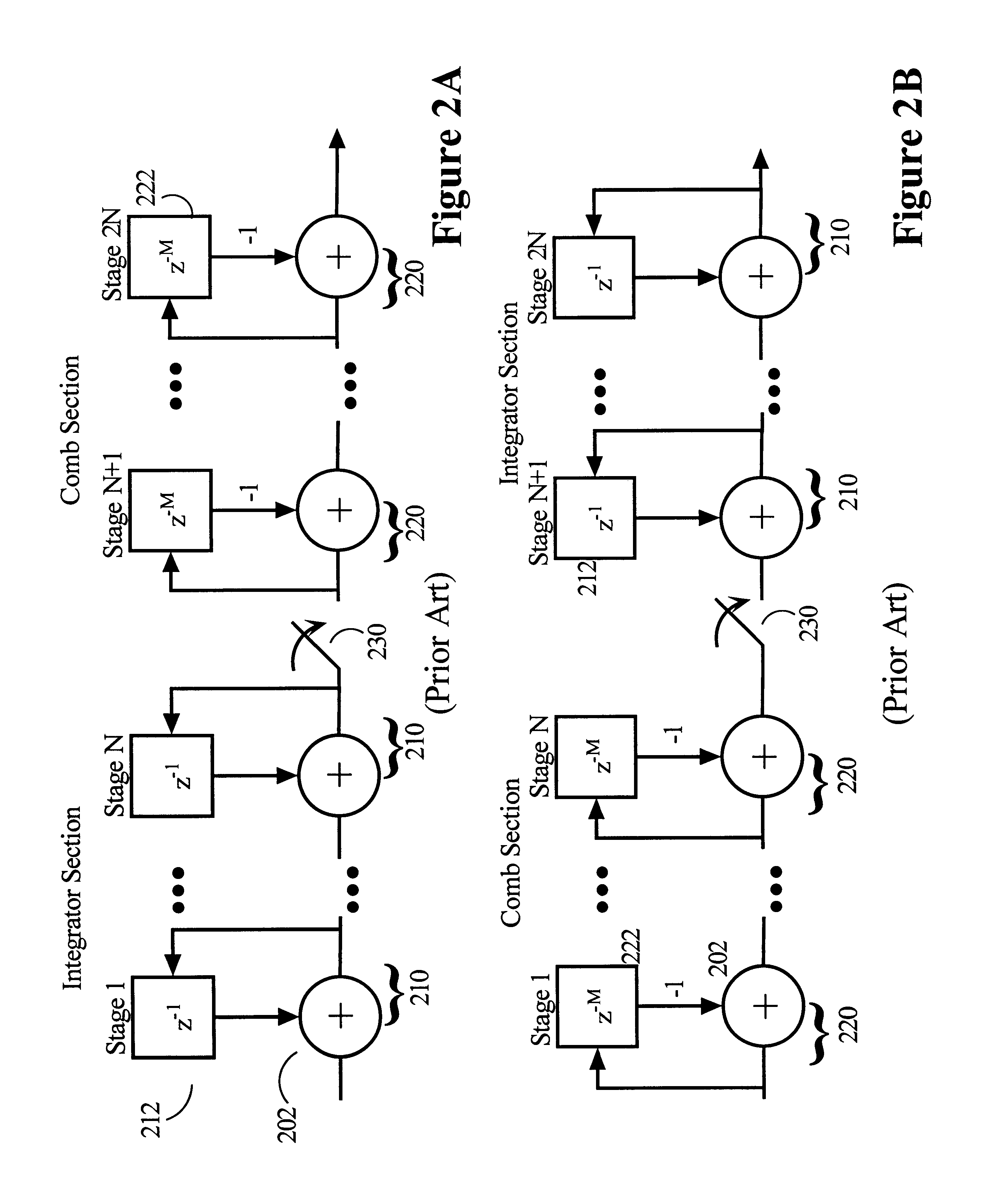Techniques for spreading zeros in a digital filter with minimal use of registers
- Summary
- Abstract
- Description
- Claims
- Application Information
AI Technical Summary
Benefits of technology
Problems solved by technology
Method used
Image
Examples
example 1
The first example designs a new Sinc3 filter where R is 16 and the split frequencies correspond to a sampling of 18 cycles and 14 cycles. For example, where fS is 8192 Hz, as in the sample ADC chip 100, an R of 16 yields an fSS of 512 Hz. The 18 cycles sampling corresponds to a frequency of about 455 Hz, (a frequency offset of −57 Hz and a time delay of two more time units), and 14 cycles sampling corresponds to a frequency of about 585 Hz (a frequency offset of +73 Hz and a delay of two fewer time units). The delays are symmetrically distributed around R, but the frequencies are not exactly symmetric. In the time domain, measured in number of sampling cycles, fSS corresponds to the integer factor fS / R. In other embodiments the delays need not be symmetrically distributed around R. But asymmetric distribution of delays generally leads to more complex traces and usually requires that more samples be retained.
FIGS. 6B and 6C correspond generally to FIGS. 5A and 5B, discussed above, re...
example 2
As another example of the method and resulting apparatus, aSinc4 filter is designed with simultaneous rejection of 50 Hz and 60 Hz line frequencies. A data dependency graph was developed for a baseline Sinc4 filter having two zeros at one frequency (such as 50 Hz) and two zeros at another frequency (such as 60 Hz). By assuming fS is about 870 Hz and fSS is about 54 Hz, R is 16. If two roots are placed at a frequency corresponding to a time interval of 16+2 and two roots are placed symmetrically at a frequency corresponding to a time interval of 16−2, then the roots actually occur at frequencies of about 48 Hz and 62 Hz, respectively. (This simple example was chosen to keep the R manageably small to serve as an illustration. At a higher sampling frequency, fS, and a higher value for R, such as the sample ADC chip 100 which has an fS value of 8192 Hz and an R of 153, roots can be placed closer to 50 and 60 Hz than in the simple example. Example 3 describes the case of the sample ADC.)...
example 3
A data dependency graph was generated for another baseline circuit (not shown) which is a Sinc4 filter having four separate zeros with time delays symmetrically distributed around fSS. The zeros for this example were fSS−β′, fSS−α′, fSS+α and fSS+β, corresponding to time delays of b, a, −a and −b, respectively. In this example, fS is 8192 Hz. To achieve at least 80 dB attenuation from 47 to 63 Hz, R was 153 (for an OWR of 53.54 Hz), a was 9 cycles and b was 20 cycles. This places zeros at 47.35 Hz, 50.57 Hz, 56.89 Hz, and 61.59 Hz, much closer to the line frequencies of 50 and 60 Hz than previous examples. The resulting filter circuit 1100 is shown FIG. 11.
Referring to FIG. 11, it can be seen that nine decimators, 1181 to 1189, are needed to sample the input 1105 from the I4 integrators 1150. Note that each decimator is connected in series to four adders or fewer. Signals from another decimator are, in some instances, incorporated by connections with a single delay register 212 asso...
PUM
 Login to View More
Login to View More Abstract
Description
Claims
Application Information
 Login to View More
Login to View More - R&D
- Intellectual Property
- Life Sciences
- Materials
- Tech Scout
- Unparalleled Data Quality
- Higher Quality Content
- 60% Fewer Hallucinations
Browse by: Latest US Patents, China's latest patents, Technical Efficacy Thesaurus, Application Domain, Technology Topic, Popular Technical Reports.
© 2025 PatSnap. All rights reserved.Legal|Privacy policy|Modern Slavery Act Transparency Statement|Sitemap|About US| Contact US: help@patsnap.com



